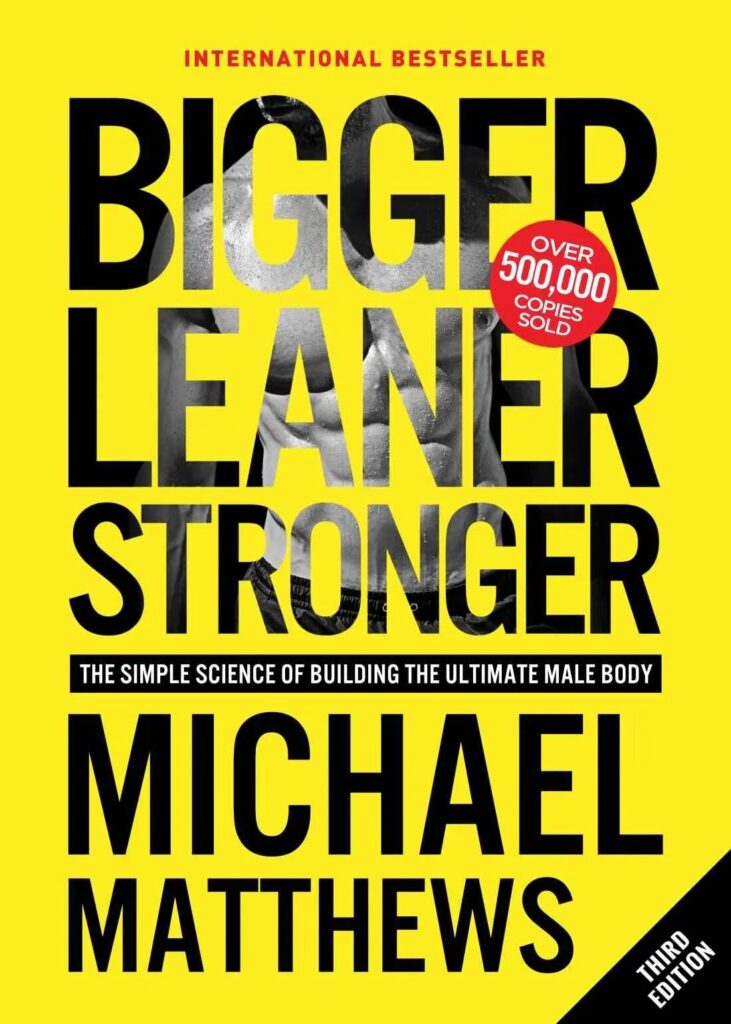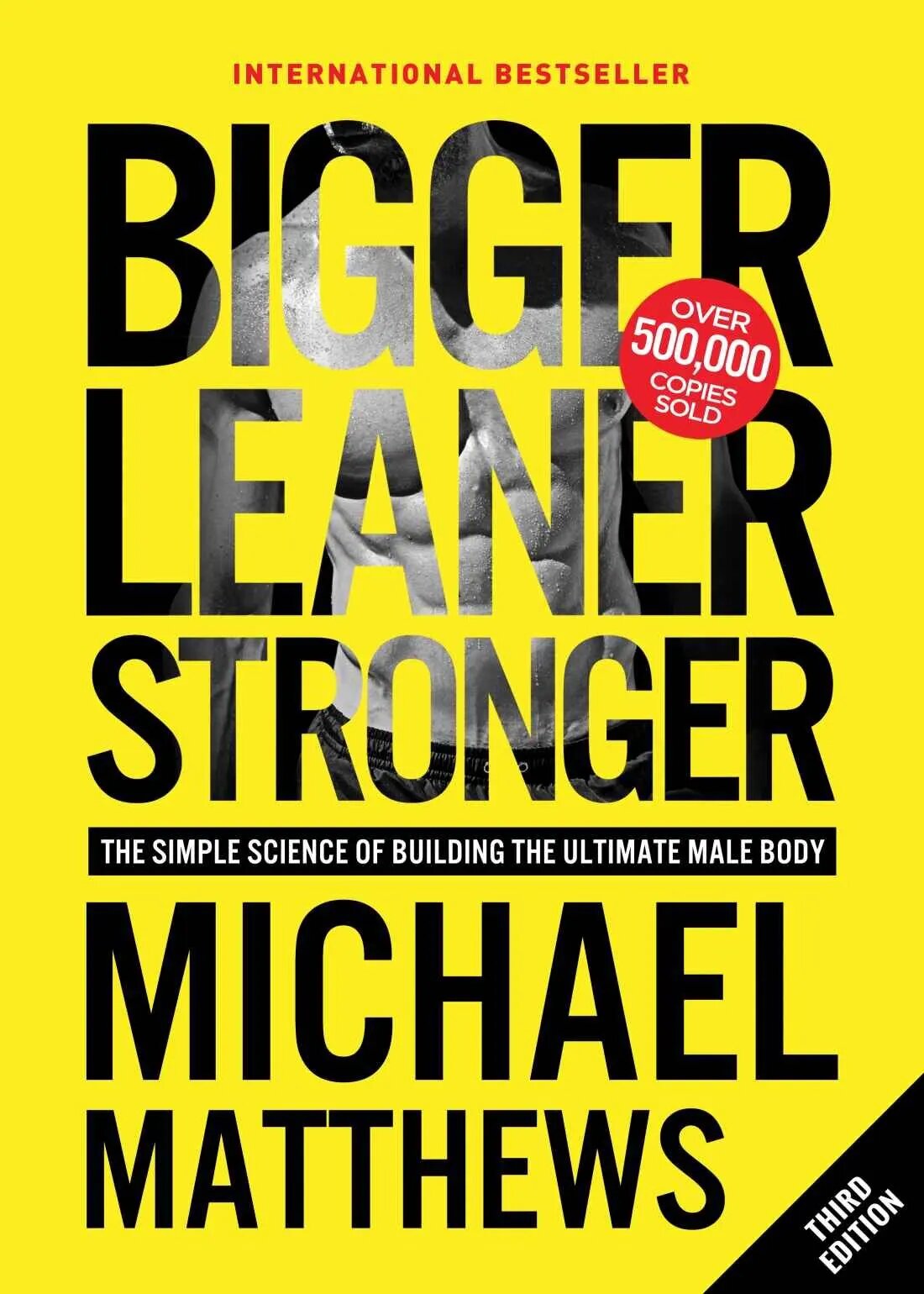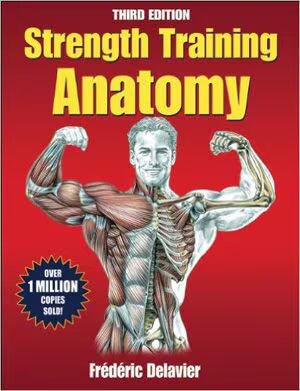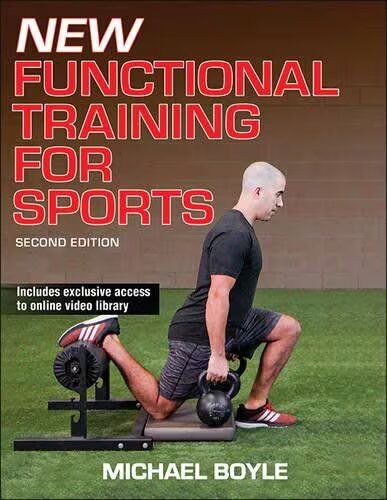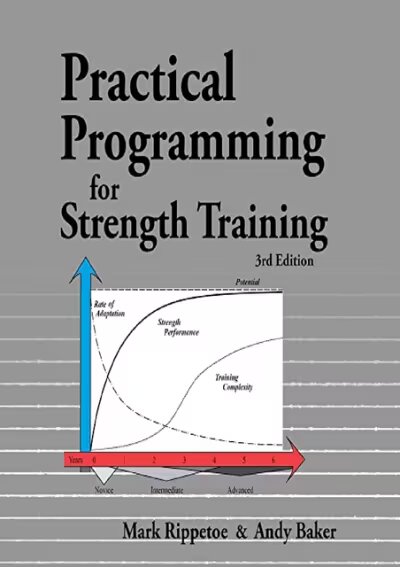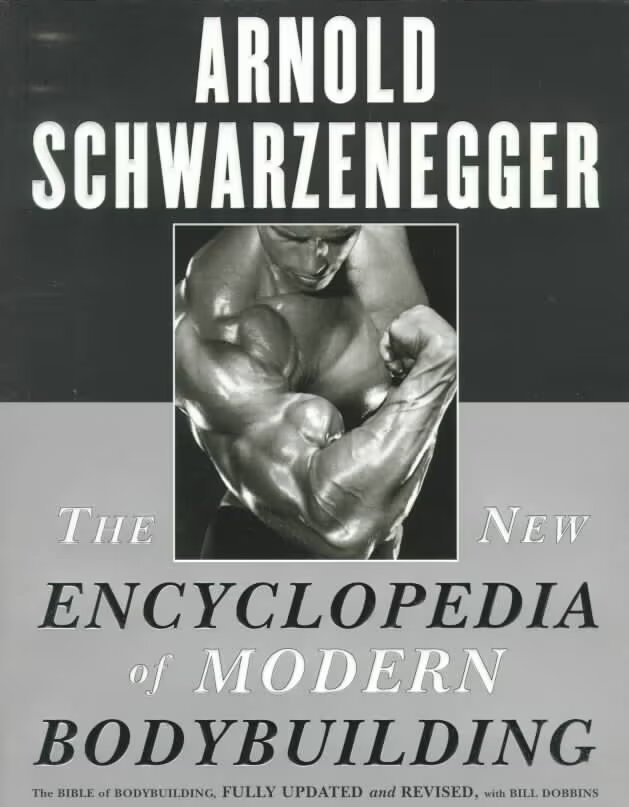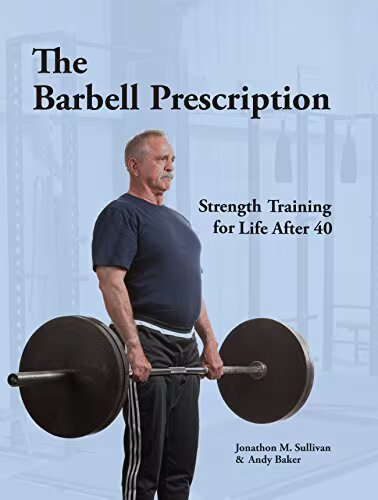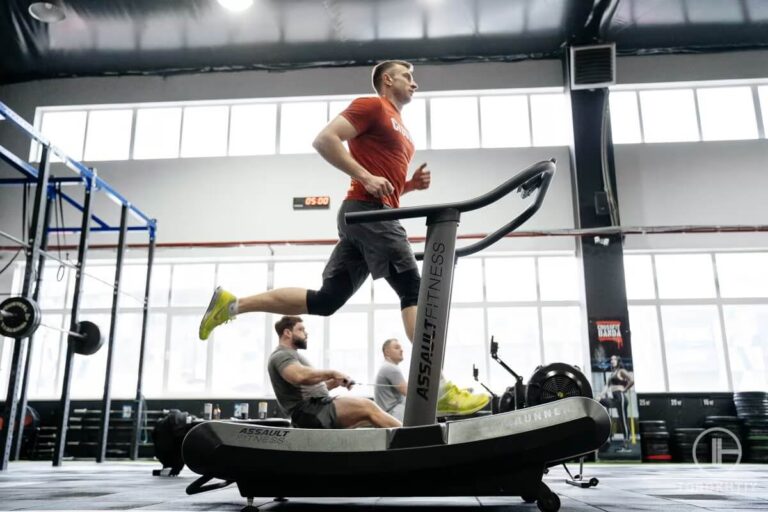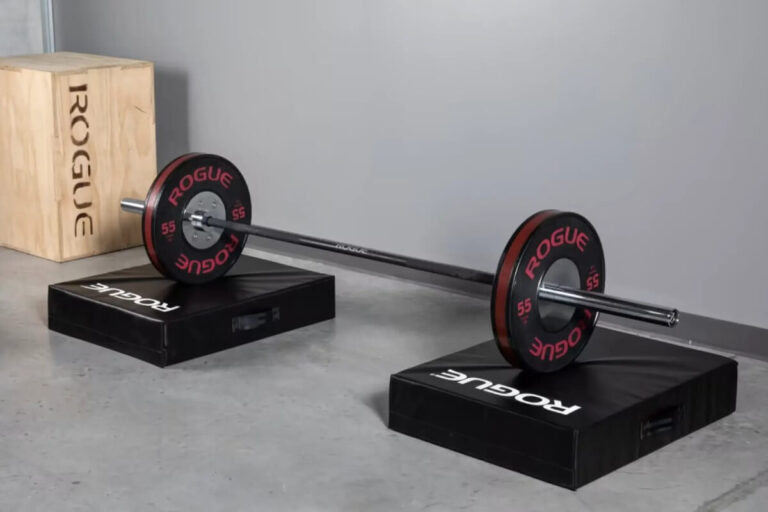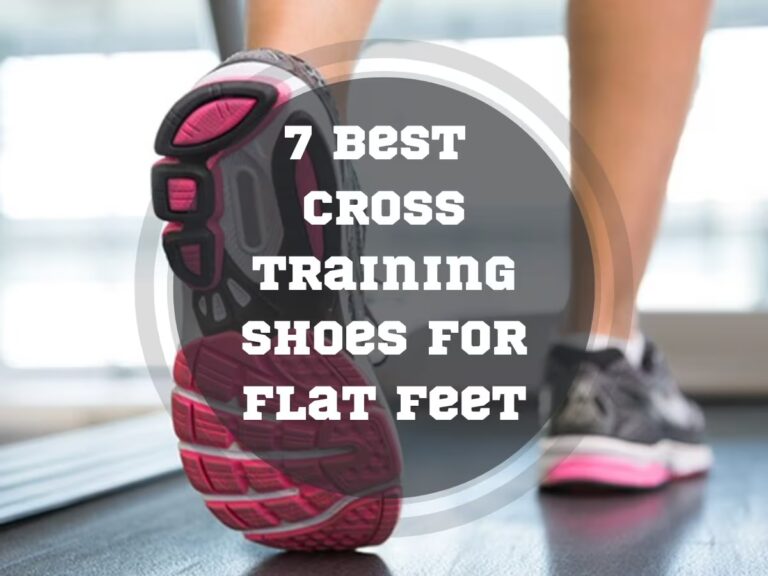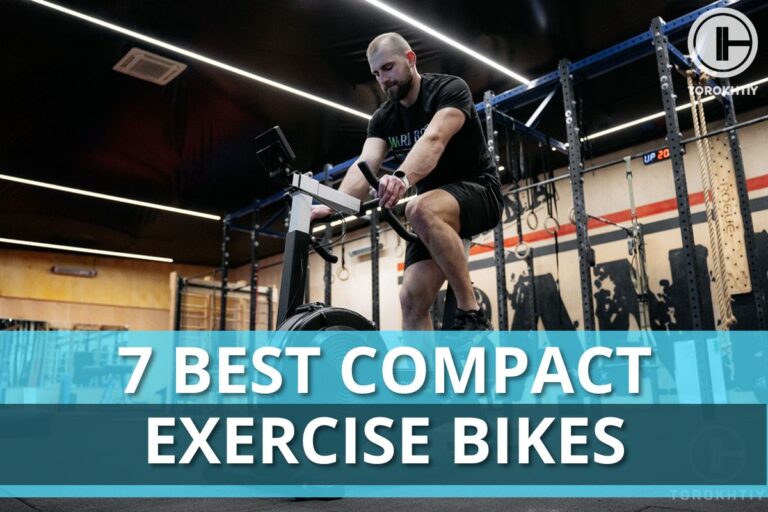7 Best Strength Training Books in 2025
Reviewed by: Oleksiy Torokhtiy (21 years of Oly Lifting experience)
Strength and conditioning books are invaluable resources for gaining expert knowledge. Learning the what, why, and when of working out is just as important as going to the gym.
Today, we’re discussing the best strength training books that you should set aside time for. Reading books is not only a great way to source information, but it can also be a relaxing and inspiring pastime with additional cognitive benefits.
In a hurry?
n a hurry and can’t keep reading? How about you check out the Bigger Leaner Stronger: The Simple Science of Building the Ultimate Male Body.
“Bigger, Leaner, Stronger” is written in a simple-to-follow and science-based approach. The book focuses on building muscle, losing fat, and eating healthy. The information in the book is backed by 338 peer-reviewed scientific studies, ensuring its credibility and effectiveness. One of the book’s highlights talks about progressive tension overload, which involves incrementally increasing the weight lifted to stimulate muscle growth.
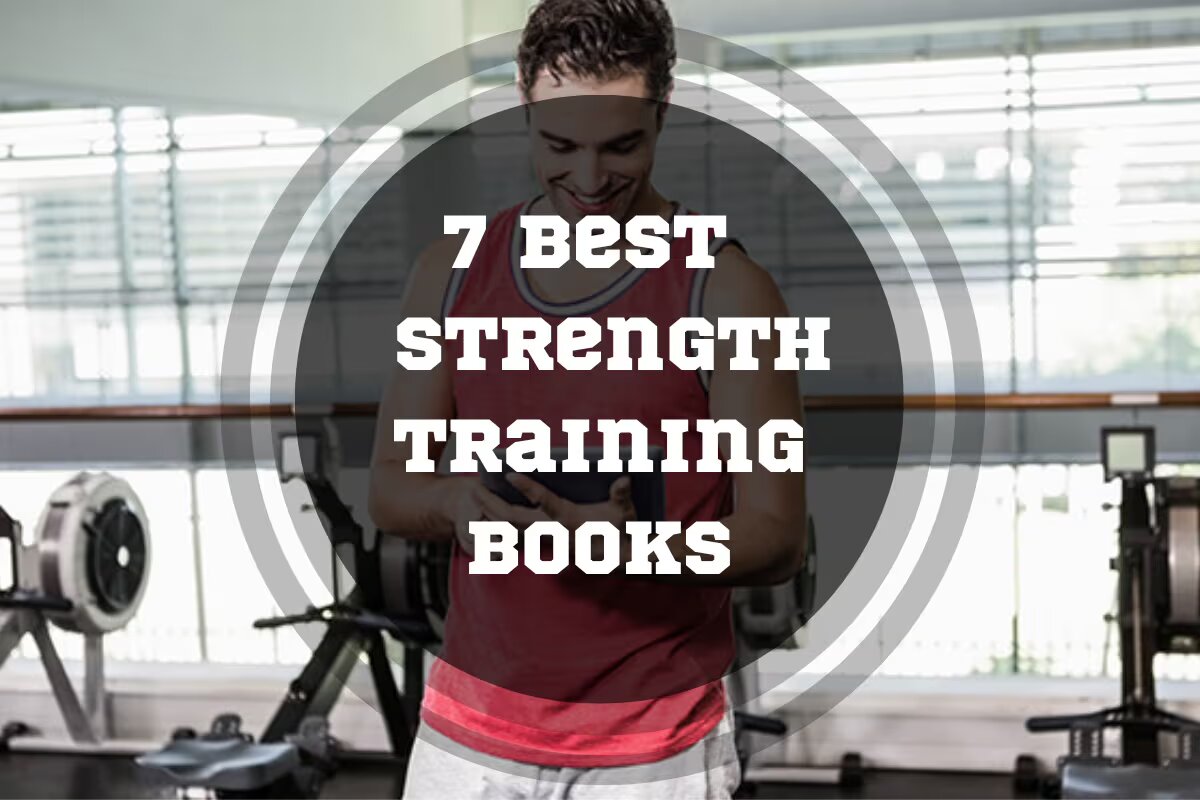
Top 7 Best Strength Training Books Reviewed
- Bigger Leaner Stronger: The Simple Science of Building the Ultimate Male Body – Top Pick
- Strength Training Anatomy, 3rd Edition – Runner-Up
- Starting Strength: Basic Barbell Training – Best For Weightlifters
- New Functional Training For Sports – Best For Functional Training
- Practical Programming For Strength Training – Best for Developing Training Plan
- The New Encyclopedia of Modern Bodybuilding – Best Classic
- The Barbell Prescription: Strength Training for Life After 40 – Best For Older Adults
1. Bigger Leaner Stronger: The Simple Science of Building the Ultimate Male Body – Top Pick
Starting off our best books on strength training list is “Bigger Leaner Stronger: The Simple Science of Building the Ultimate Male Body” by Michael Matthews. Michael is a fitness trainer and author, and the founder of Legion – an all-natural sports supplements brand. His work has been featured in popular publications such as Esquire, Men’s Health, Elle, Women’s Health, Muscle & Strength, and others.
- Author: Michael Matthews
- Brief summary: Science-based exercise, nutrition, and lifestyle book
- Suggested for: From beginners to professionals
- How it can help: The book contains practical and theoretical advice for building muscle and losing fat
- Copies sold: 600,000
- Format: Paperback, Audiobook, Kindle
- Number of pages/hours: 437 pages, 14 hours
“Bigger, Leaner, Stronger” is written in a simple-to-follow and science-based approach. The book focuses on building muscle, losing fat, and eating healthy.
However, unlike similar books, it highlights realistic and sustainable strategies that can be adopted by many people of differing lifestyles. In other words, it doesn’t promote extreme dieting and workouts that promise overnight results.
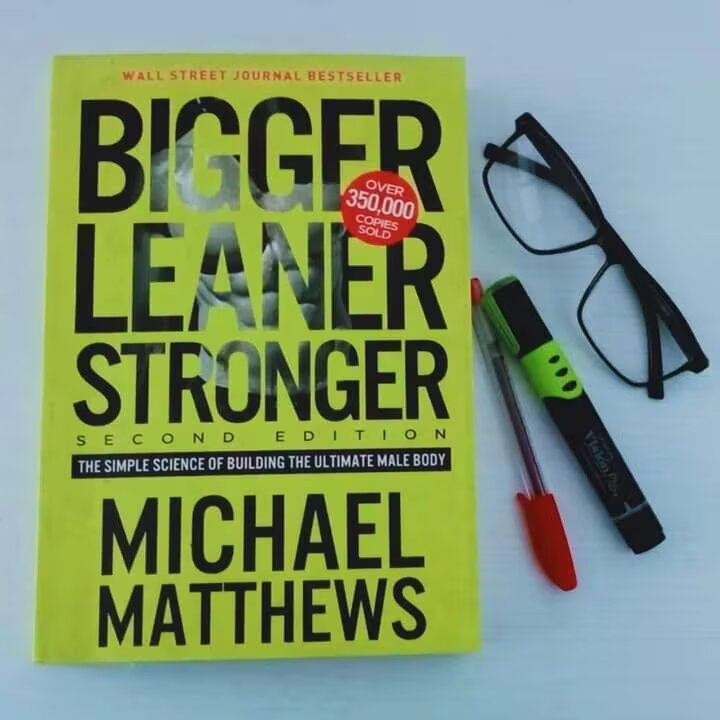
The information in the book is backed by 338 peer-reviewed scientific studies, ensuring its credibility and effectiveness. One of the book’s highlights talks about progressive tension overload, which involves incrementally increasing the weight lifted to stimulate muscle growth. Matthews also advocates for the use of free weights and compound lifting workouts over resistance machines. His favorite recommended exercises are the bench press, military press, squat, and deadlift.
Positives:
Could be better:
2. Strength Training Anatomy, 3rd Edition – Runner-Up
Ever wondered what your favorite exercises look like at the anatomical level? Then this book is for you. Reviewed and published by Human Kinetics, this is the third edition of this best-selling series with over 2.5 million total copies sold.
The author, Frederic (Frédéric), is a French fitness journalist and former powerlifter national champion (1988). He studied morphology and anatomy for five years at the prestigious École des Beaux-Arts in Paris and dissection for three years at the Paris Faculté de Médecine, giving him ample expertise of the subject.
- Author: Frederic Delavier (Frédéric in French)
- Brief summary: Illustrations of popular exercise anatomy
- Suggested for: From beginners to professionals
- How it can help: Provides an easy-to-understand insight into exercise anatomy and kinematics
- Copies sold: 2.5 million
- Format: Paperback
- Number of pages: 192 pages
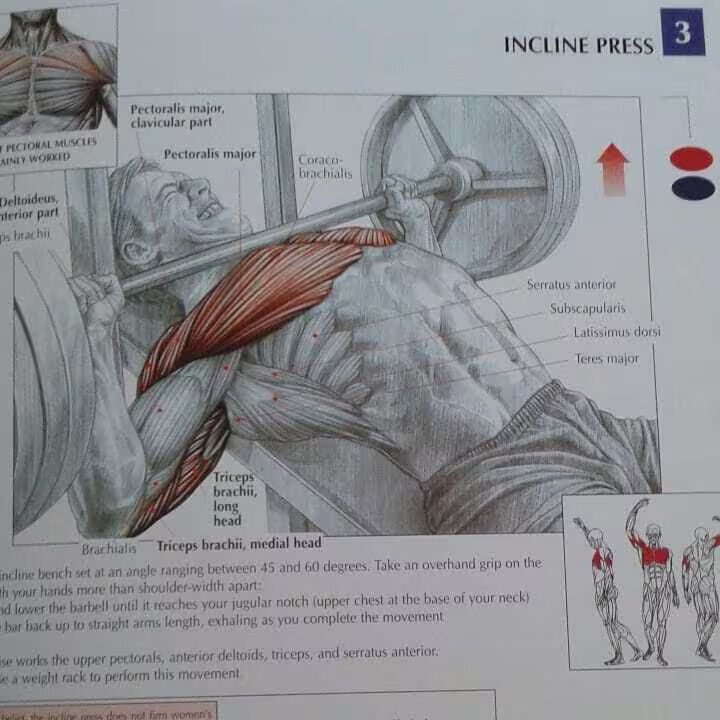
The book contains over 600 full-color illustrations created by Delavier. They not only describe the primary muscles worked during popular exercises, but also their surrounding structures like bones, ligaments, tendons, and connective tissue. The pictures are large and clear with easy-to-understand color highlights, akin to those found in the best strength training ebooks that cost multiple times more.
Overall, a short and to-the-point book focused on visual learning.
Positives:
Could be better:
3. Starting Strength: Basic Barbell Training – Best For Weightlifters
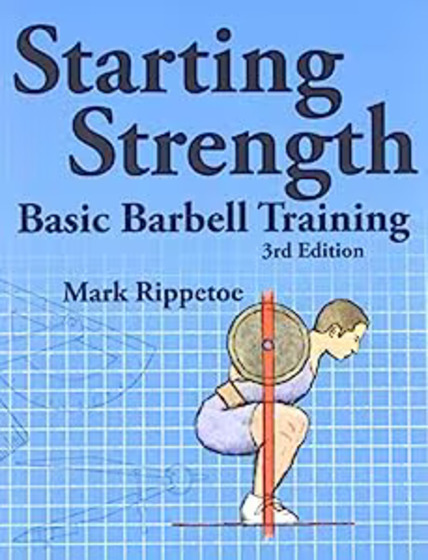
As you could tell by the name, “Starting Strength: Basic Barbell Training”, is one of the best weight training books focused on popular barbell exercises. It provides an excellent source for beginner powerlifters and those looking to get into barbell lifts. The book was written by Mark Rippetoe, with illustrations provided by Jason Kelly.
- Author: Mark Rippetoe
- Brief summary: Detailed explanation of popular compound barbell exercises
- Suggested for: Beginner powerlifters and intermediate athletes looking into barbell exercises
- How it can help: It shows how to properly do exercises and program them into your routine
- Copies sold: 150,000
- Format: Paperback, audiobook, Kindle
- Number of pages/hours: 347 pages, 16 hours
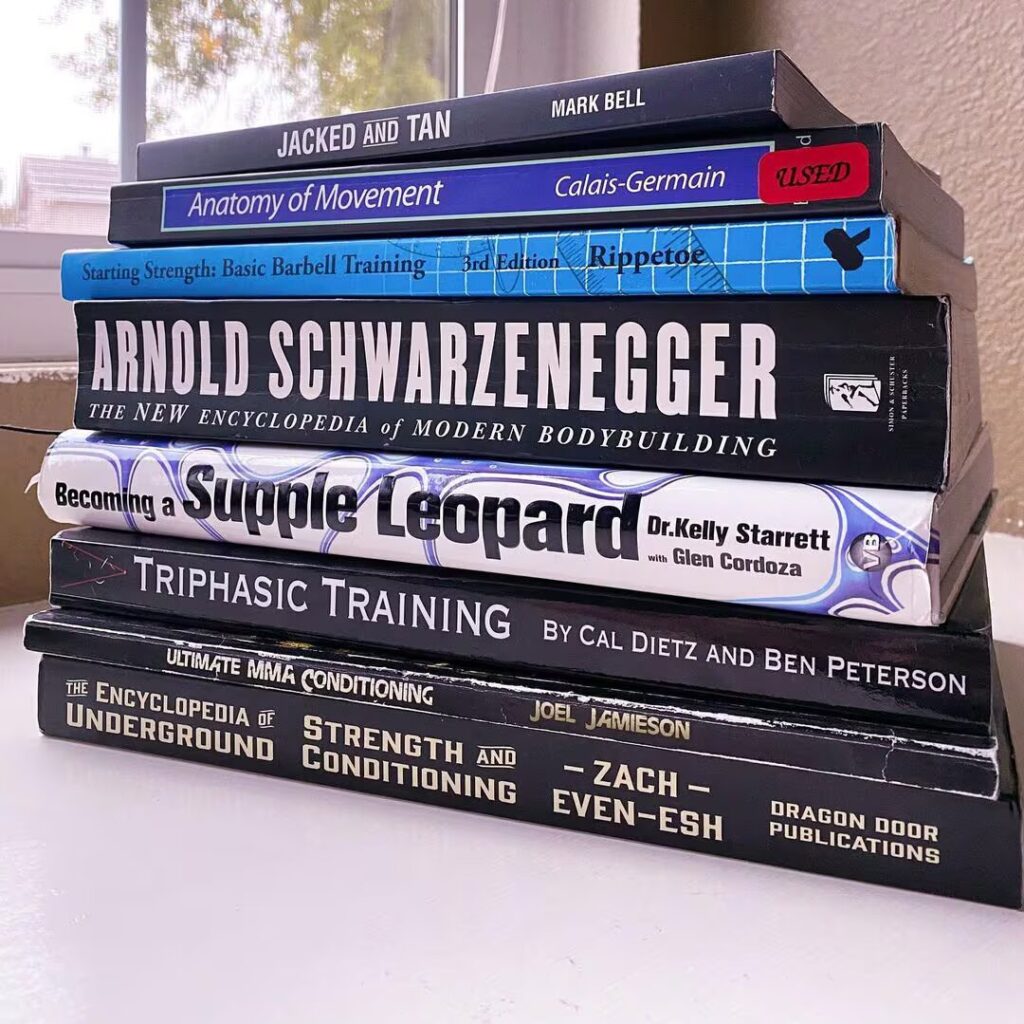
The book highlights the importance of resistance training for improving strength, performance, health, as well as appearance. A large portion of it utilized visual learning, opting to explain through photographs and illustrations rather than raw text, making it easy to digest. The six exercises it focuses on are the squat, overhead press, deadlift, bench press, power clean, and power snatch. The programming it provides is also very accessible, since it only requires a barbell and weight set to complete, making it easy to do at home as well.
Positives:
Could be better:
4. New Functional Training For Sports – Best For Functional Training
New Functional Training For Sports is one of the best strength and conditioning books for athletes and coaches. Reviewed and published by Human Kinetics, it was written by Michael Boyle – a renowned expert in the field with decades of experience and impressive accolades. This is the book’s second edition, published in 2016 with relevant and up-to-date information.
- Author: Michael Boyle
- Brief summary: Deep dive into functional exercises relevant to sports performance
- Suggested for: Everybody, especially athletes and coaches
- How it can help: The book provides a holistic approach to training for amateur and professional athletes and their coaches
- Format: Paperback, Kindle
- Number of pages: 256 pages
The book is a comprehensive guide that caters to athletes and trainers. It offers a wealth of exercises, approach methods, and training concepts and programs to optimize performance and minimize injury risk.
It focuses on functional exercises targeting different body parts, including the lower body, core, upper body, and overall physique. Note that the emphasis is on enhancing balance, stability, agility, explosive power, and other biomechanics, rather than raw strength and muscle building.
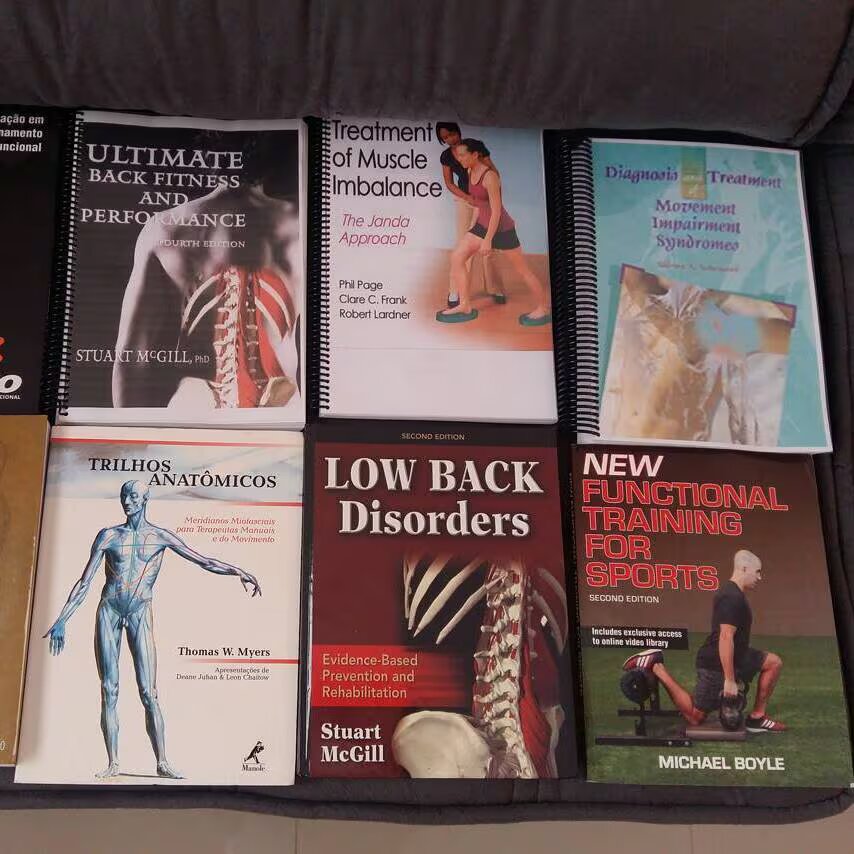
Instead of using raw text descriptions, this book uses full-color, high-definition images that explain foundational movements.
Moreover, each purchase comes with access to online video demonstrations, commentary, and analysis for key exercises.
Positives:
Could be better:
5. Practical Programming For Strength Training – Best for Developing Training Plan
This strength training book covers the importance of programmed training for improving exercise efficiency, safety, and results. We’ve already mentioned one author, Mark Rippetoe, in our #3 spot. His co-author, Andy Baker, is a Raw and Drug Free competitive powerlifter and Natural Athlete Strength Association athlete with over 15 years of experience.
- Author: Mark Rippetoe, Andy Baker
- Brief summary: Highlighting the importance of training with a program as opposed to freestyling
- Suggested for: Beginners
- How it can help: Helps you understand the importance of training with a plan
- Format: Paperback, audiobook
- Number of pages/hours: 256 pages, 12 hours
The book highlights the distinction between exercise and training, emphasizing the significance of a well-structured program aligned with long-term goals, as opposed to working out “on-the-fly”. It explores the physiological mechanisms of adaptation and offers specific programs for novice, intermediate, and advanced lifters.
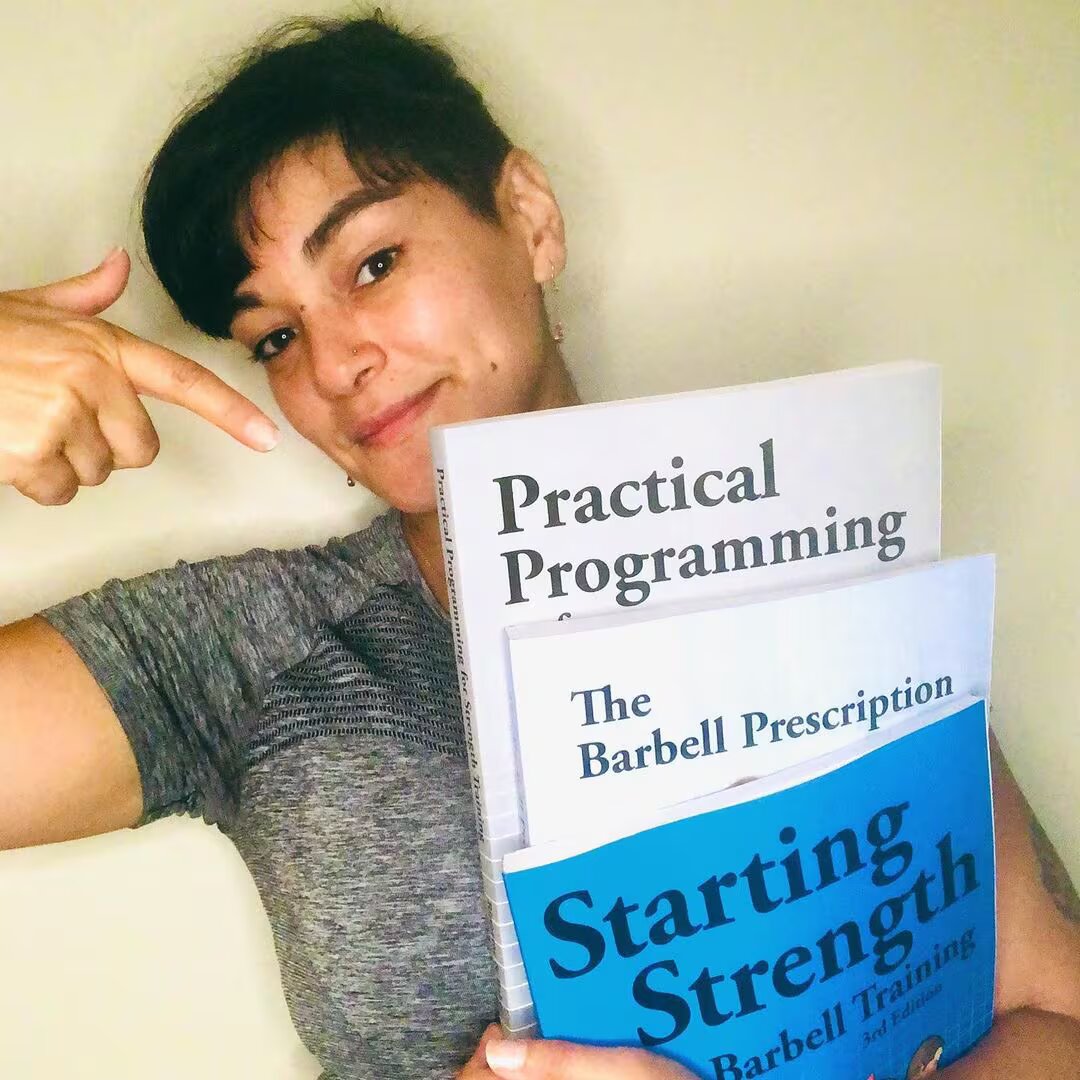
While the book caters to individuals of all fitness levels, it is definitely the most valuable for beginners who may not yet grasp the importance of consistent training. It provides proven programs and dedicates chapters to addressing common challenges faced by diverse populations, including those who are underweight, overweight, of different genders, and seniors.
Regardless of athletic ability, readers will find detailed day-to-day, workout-to-workout, and week-by-week programs to incorporate into their exercise routines.
Positives:
Could be better:
6. The New Encyclopedia of Modern Bodybuilding – Best Classic
The New Encyclopedia of Modern Bodybuilding was written by none other than legendary bodybuilder and actor, Arnold Schwarzenegger. Considered “The Bible of Bodybuilding” – which later became the book’s subtitle – it offers a unique and personal perspective into bodybuilding both as a physical activity and lifestyle choice from the point of view of one of the all-time greats.
- Author: Arnold Schwarzenegger
- Brief summary: History of bodybuilding, as well as industry techniques and secrets
- Suggested for: beginners/professionals
- How it can help: Highly motivational and eye-opening
- Format: Paperback, Kindle
- Number of pages: 800 pages
The book offers extensive guidance on various aspects of bodybuilding. It covers a wide range of topics such as diet and nutrition, training psychology, injury prevention, and competitive preparation methods specifically beneficial for bodybuilders.
However, it’s important to note that the last revision of the book was in 1999, which means some of the information may be outdated in practical terms.
Nevertheless, it remains a timeless classic in the realm of strength training literature and is recommended for reading at least once.
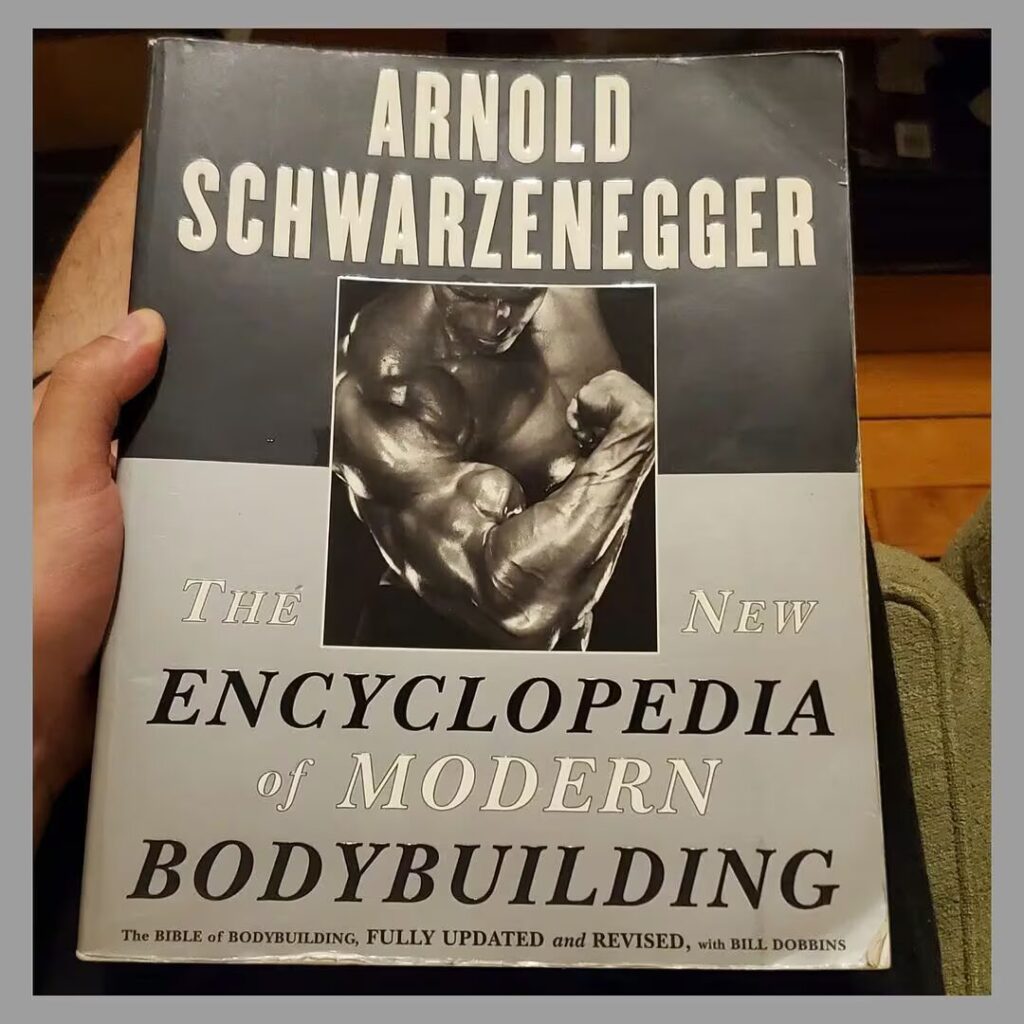
Arnold Schwarzenegger’s personal experience as a seven-time winner of the Mr. Olympia title holder and his success as an international film star breathes life into the book. His perspective allows him to go beyond generic exercise guidelines and delve into strategies for competitive bodybuilders, including scouting your competition, posing techniques, and managing publicity, among other tips.
Positives:
Could be better:
7. The Barbell Prescription: Strength Training for Life After 40 – Best For Older Adults
“The Barbell Prescription: Strength Training for Life After 40” is a book by Jonathon M Sullivan MD, Ph.D, SSC. It provides an informative and programmed approach to combating challenges faced by older adults by using weight training. The book was co-authored by Andy Baker, whom we’ve touched upon in our #5 spot.
- Author: Jonathon M. Sullivan, Andy Baker
- Brief summary: Highlights the importance of strength training for adults
- Suggested for: Everybody
- How it can help: Provides valuable information on aging and exercise written by a medical doctor
- Format: Paperback, Kindle
- Number of pages: 384 pages
Most weight training books for older adults focus on adopting low-impact, minimal-risk exercises such as cardio as a method of staying active as we age.
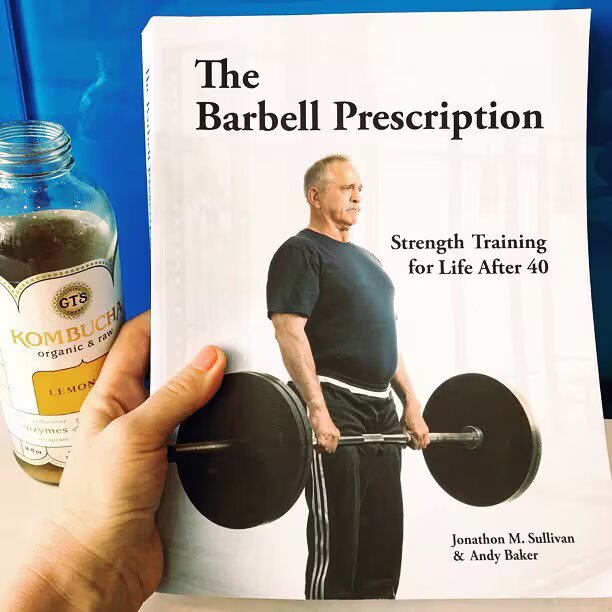
However, Sullivan argues that, to truly stay as healthy and strong as possible, we need to continue resistance training well into our later years. He uses his knowledge as both a medical doctor and fitness expert to show how weighted exercises prevent common issues that come with aging, such as loss of muscle and bone density, cognitive and mental health decline, chronic disease risk, etc.
Meanwhile, his co-author lends his expertise to the latest and best resistance training methods to create suitable programs.
Positives:
Could be better:
Why Are Strength Training Books Important?
Despite the digital age offering more than a few ways to consume information, books have stood the test of time. Here’s how strength and conditioning books can prove valuable:
1. Information Accuracy
With the vast amount of information available online, it can be difficult to know whom to trust. Amidst the abundance of fitness influencers and web gurus, accurate information can be scarce and hard to find.
Meanwhile, the best books on strength training are written by industry experts who rely on reputable sources and triple-check their information with the appropriate subject authorities before publishing.
2. Motivation And Inspiration
Books for strength training are authored by people with extensive knowledge of the topic. They provide a more personalized account of the information compared to simply finding it online on a website or podcast.
Engaging with the achievements and experiences of others can be both enjoyable and relatable. Apart from useful information, books talk about personal struggles and success stories, and include motivational anecdotes and real-life trivia, giving them a more personal touch that ignites your imagination and inspires you to pursue your goals.
3. Reading Sticks Longer
In the digital day and age, we’re constantly bombarded by information from all sides. However, most of it passes by and leaves our memory mere seconds after we’ve consumed it. Modern preferences indicate that the 21st-century person is more fond of receiving information visually or via audio, rather than through reading.
That said, reading is proven to be the superior medium of information retention. In other words, you’re more likely to remember crucial information if you’ve read it for yourself in a book, rather than heard on the podcast, for example.
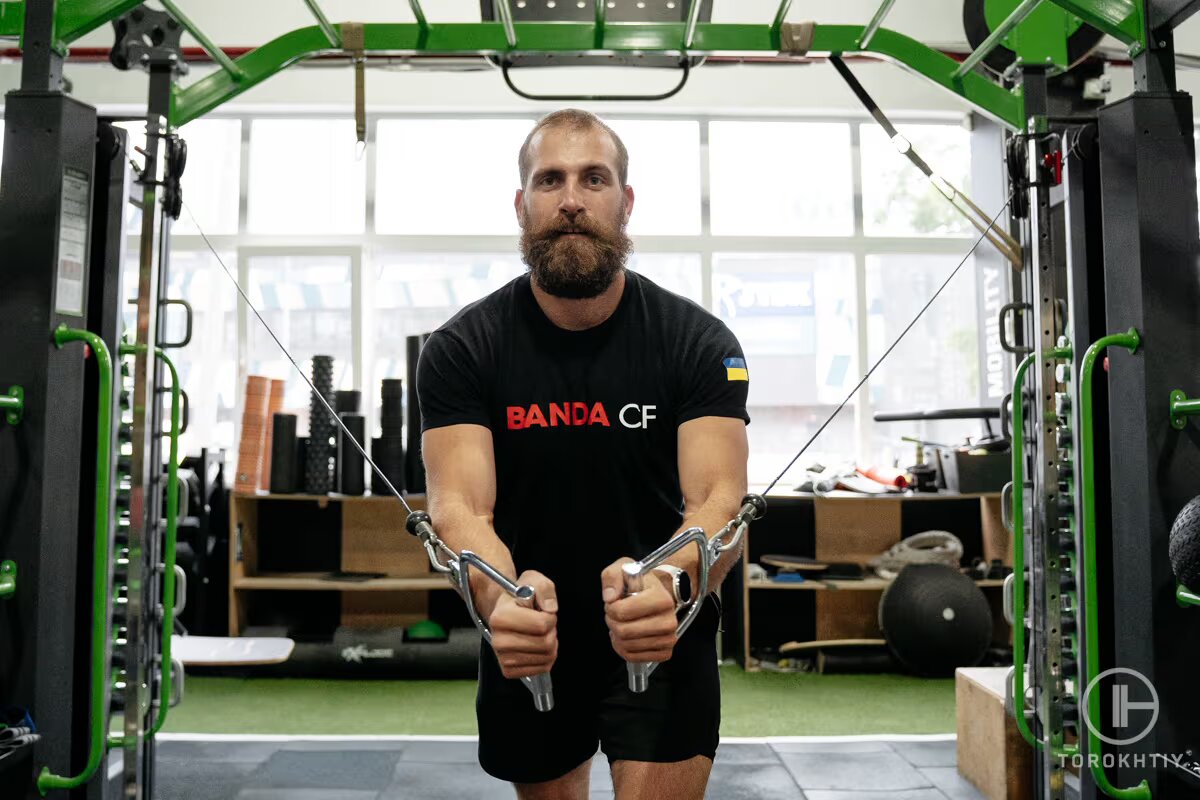
How To Choose the Right Strength Training Book?
When choosing a book that contains practical advice, it’s always good to know it comes from a credible source and that the info it contains aligns with our interest. If possible, it’s always a good idea to get a sample chapter or audio clip. Otherwise, refer to the following factors:
1. Author’s Expertise
When it comes to choosing weight training books, the author’s expertise plays a vital role in ensuring the information is trustworthy and accurate. Authors who have a wealth of knowledge and hands-on experience in the field truly understand what they’re talking about. They can offer invaluable insights, practical tips, and evidence-based strategies that work. With their expertise, the content gains credibility, giving readers important peace of mind.
2. Reviews
When choosing a book, reviews can provide valuable insight from those who’ve already experienced the content. They can provide valuable information on what the book does well and what it lacks, and its relative overall value. Reading both expert and public reviews can more accurately tell you whether or not the information will prove valuable, so make sure to check out a mix of both. When it comes to strength training books, they’re often reviewed by other industry experts that are knowledgeable on the subject and can confirm the validity of their contents.
3. Fitness Level
Although many of the best books on strength training tend to be all-encompassing, providing value regardless of your fitness level, it’s still important to consider who the book is recommended for.
That way, you not only ensure the information inside will coincide with your fitness goals, but you also make sure you get your money’s worth.
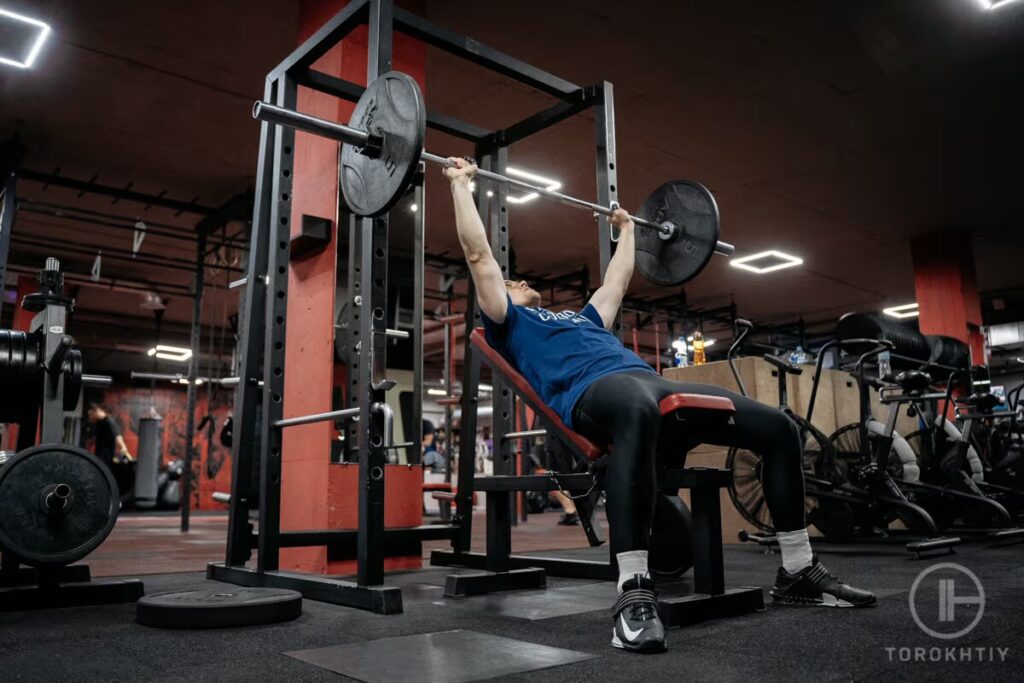
FAQ
How Do I Teach Myself Strength Training?
Reading books on strength training is a good way to gain valuable knowledge of the subject. That said, first-hand experience arguably goes a long way.
The best way to teach yourself strength training is going out there and training, but never forgetting to refresh your knowledge using books or other information sources.
Is Strength Training Better Than Cardio?
Whether or not strength training is better than cardio mostly depends on your fitness goals. Although it is generally true that cardio training is better for weight loss, while resistance training is better for muscle building, most research recommends a combination of the two.
Additionally, at the medium level, moderate weight training corresponds with moderate cardio activity when it comes to the level of physical intensity. Ideally, you want to combine both exercise methods while putting more emphasis on the one that corresponds better with your goals.
Conclusion
This concludes our topic on the best strength training books. Each of these books can provide practical knowledge as well as a deeper understanding of the science and importance of strength training. Moreover, they’re written by experts in the field and often peer-reviewed to ensure the information is accurate and up-to-date.
Our favorite book on strength training to read is Bigger Leaner Stronger by Michael Matthews, thanks to being all-encompassing, to the point, science-based, and friendly towards all athlete levels.
We’d also like to hear from you. Do you have any strength and conditioning books you recommend? Also, tell us which of our top picks matches your current goals and which you plan to pick up soon.
Leave a comment letting us know and remember to follow our social media pages for more valuable fitness content.
Also read:
- Best Fitness Books
- Gifts For Athletes
- Best Calisthenics Workout Book
- Best Powerlifting Books
- Best Bodybuilding Books
- Best Books for Personal Trainers
References:
- Improving muscle size // ResearchGate: https://www.researchgate.net/publication/358008997
- Resistance training // PubMed: https://pubmed.ncbi.nlm.nih.gov/12831709/
- Effects of aerobic and/or resistance training // NCBI: https://www.ncbi.nlm.nih.gov/pmc/articles/PMC3544497/
- General Physical Activities Defined by Level of Intensity // CDC: https://www.cdc.gov/nccdphp/dnpa/physical/pdf/pa_intensity_table_2_1.pdf
Why Trust Us?
With over 20 years in Olympic Weightlifting, our team does its best to provide the audience with ultimate support and meet the needs and requirements of advanced athletes and professional lifters, as well as people who strive to open new opportunities and develop their physical capabilities with us.
All products we select are primarily approved and tested by the Olympic Weightlifting Champion Oleksii Torokhtiy. Under his guidance, we provide honest and reasonable assessments of the products we review by checking their characteristics, packaging, design, comfort and durability features, and general product rating. We select products from only high-quality and trusted sports brands, thus vouching for their quality.
The product testing process is described in more detail here
Author: Ihor Shymechko
Pro Olympic Weightlifter, Coach
Best Results: Snatch – 208 kg,
C&J – 240 kg
Ihor has been a professional weightlifter since 1996, boasting over two decades of competition experience. His notable achievements include clinching the European Championship in 2009 and securing a silver medal in the 105kg division at the Senior World Championships in 2011. Ihor represented his country in the 2008, 2012, and 2016 Summer Olympics. After retiring from competitive weightlifting, he transitioned to coaching, leveraging his vast experience to guide athletes who now compete on both national and international stages.
Reviewed by: Oleksiy Torokhtiy
Olympic Weightlifting Champion
Best Results: Snatch – 200 kg,
C&J – 240 kg
Oleksiy Torokhtiy is a professional athlete boasting 20 years of experience in Olympic weightlifting. With multiple European and World titles under his belt, he has showcased his prowess in two Olympic Games (Beijing 2008 and London 2012). Upon concluding his illustrious career, Oleksiy dedicated himself to coaching. By 2022, he had conducted over 200 weightlifting seminars worldwide. He is the visionary behind an international sportswear and accessories brand known for its motto, “Warm Body Cold Mind.” Additionally, he is an esteemed author and the creator of a series of training programs and eBooks.
If you have any questions/suggestions/any other inquiries considering product reviews, you can reach out to us via email – [email protected]

